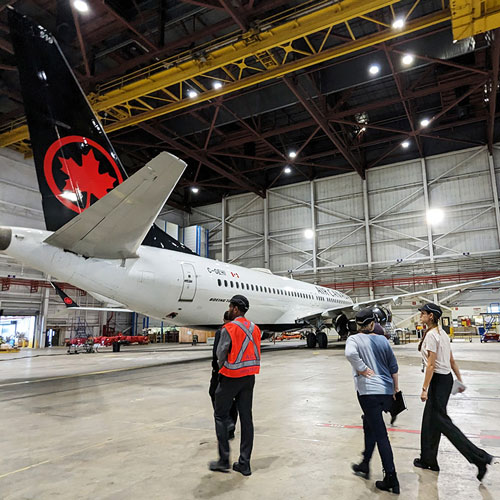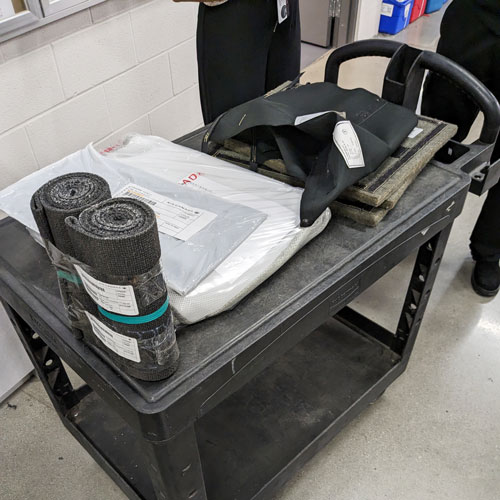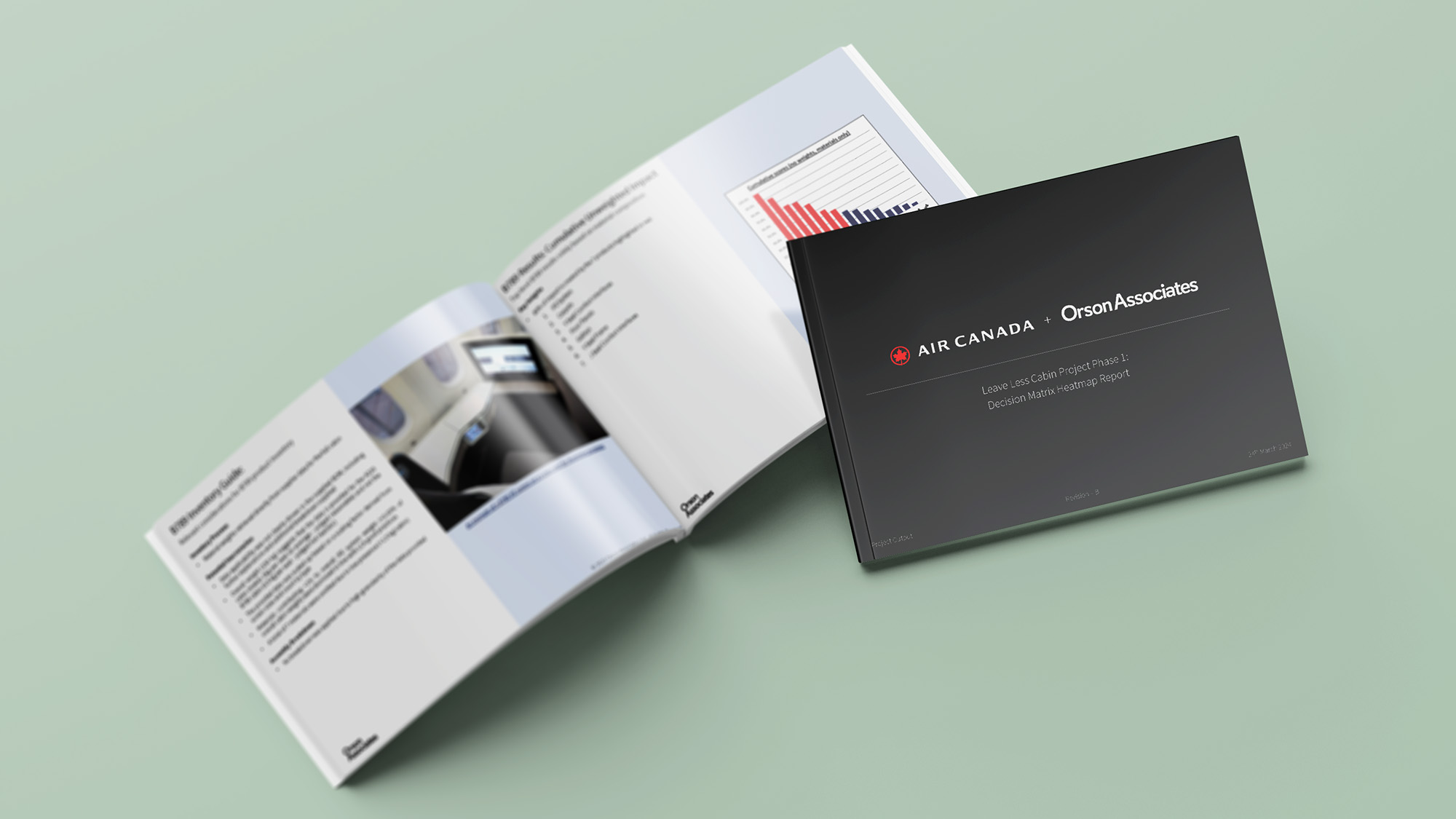Air Canada
2022
Manager, Waste Management and Circular Programs, Air Canada
Air Canada is moving toward adapting its cabin strategy based on circular economy principles. The airline mandated Orson Associates to obtain a detailed and validated breakdown of the impact characteristics of a large and diverse set of legacy cabin products to enable prioritising investment in future improvements.
Without such a detailed understanding, it’s impossible to deliver a programme of measurable improvements in environmental performance efficiently.
At the same time, it was vital to ensure that any strategy was aligned with the real-world opportunities and constraints presented by Air Canada’s business models and the evolving possibilities for product circularity.

Aircraft types surveyed

Cabin products modelled

Materials analysed
For a scope this complex and extensive, traditional life cycle assessment (LCA) would have been prohibitively costly and time consuming. Instead, we applied our bespoke methodology and toolset, bringing in key insights from Air Canada’s strategic priorities in combination with our decades of experience in the cabins sector. We were able to conduct our analysis and provide the necessary data in a matter of weeks.
A key part of the process was the creation of a volumetric model of the cabin products, broken down by material masses, derived from 3D digitisation of photographs gathered in rapid surveys of aircraft undergoing scheduled maintenance. Freed from reliance on the supply chain for our data, this minimised the administrative burden on Air Canada and its supply chain, and significantly accelerated progress.
Develop a bespoke analytical framework to assess cabin product's sustainability.
Obtain cabin product data for selected aircraft models.
Retrieve the official sustainability impacts for cabin materials identified
Extend the analytical tool to account for relevant qualitative factors
Summarise assessment results and deduce relevant insights
The priority listings considered environmental, operational and logistical factors. Each entry provided an evidence-based justification for its ranking, accompanied by a clear description of the nature of its environmental impacts and suggestions for how these could be resolved.
Consequently, Air Canada is now better informed to develop its plans for the next generation of cabins, and to allocate resources where the greatest value in the shortest timeframe will be delivered
